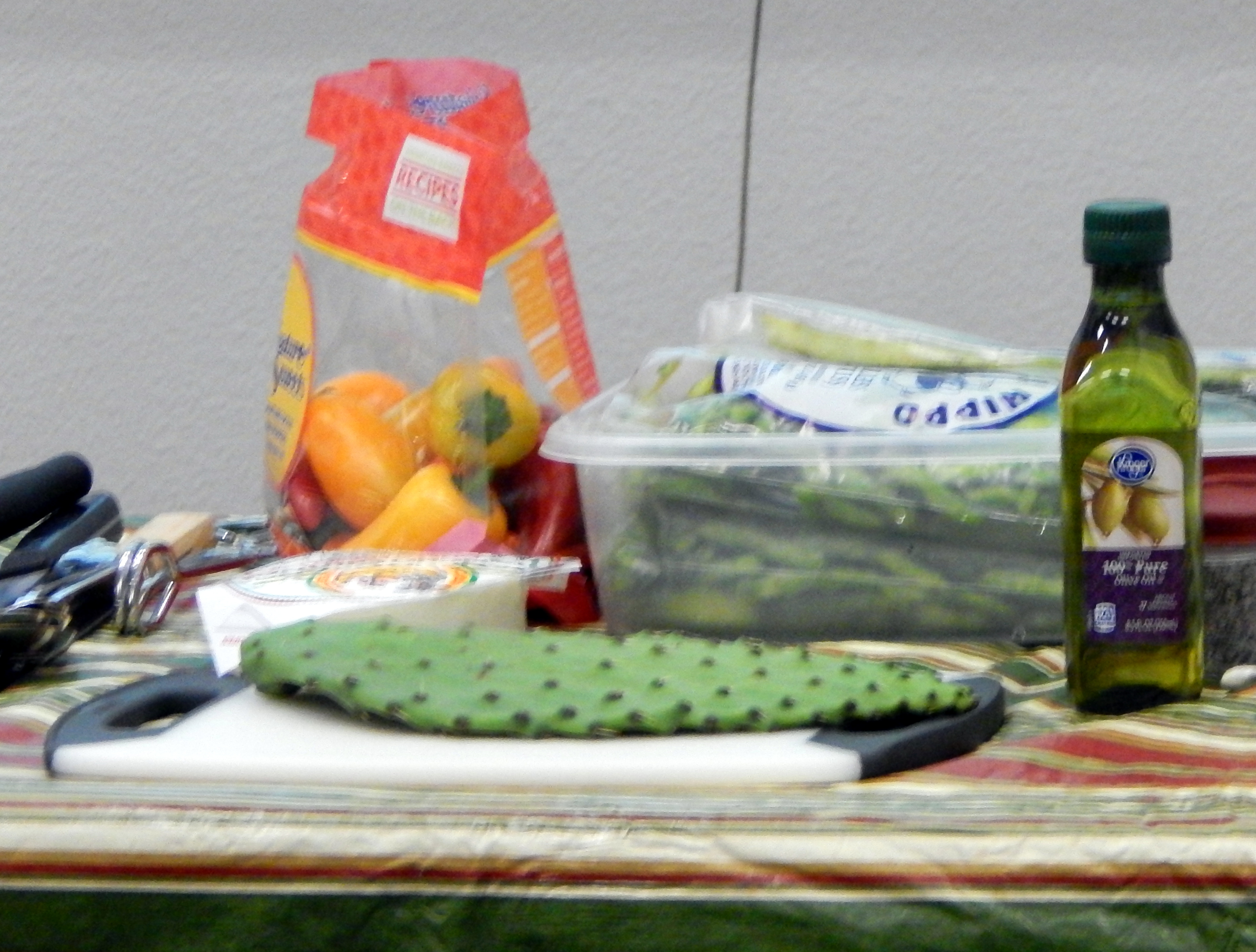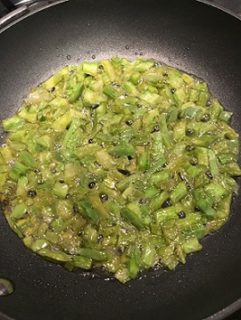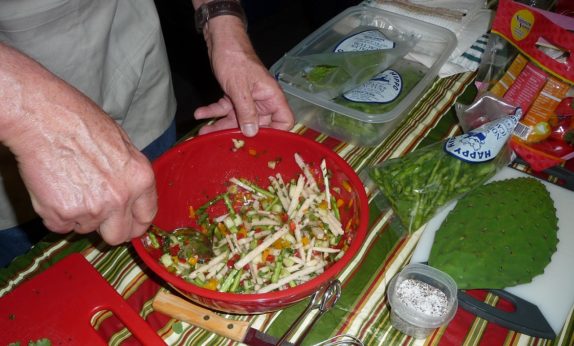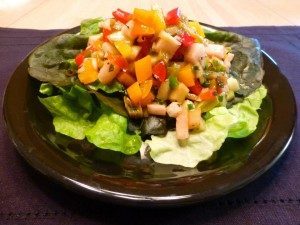by Jim Hastings, El Paso Master Gardener
Prickly pear cacti (Opuntia) are popular plants in local gardens. Their sculptural shape, brilliant blossoms and colorful fruit make them attractive all year round. Native to the Americas, they now are found all over the world.
Nopal is the Spanish word for the prickly pear pad. Cleaned and diced, they are called nopalitos (little nopales). The green pads and the fruit of all prickly pear varieties are edible. The pads have a vegetable flavor. The fruit is very sweet. Prickly pear pads are about 90% water. The fruit is about 85% water with approximately 10 to 15 percent glucose and fructose. They are rich in vitamins C and A, and beta-carotene. They have very little carbohydrate or fat. There are about 25 to 30 calories in a quarter pound.
- Prickly Pear Cactus Pad Ready for Recipe
- Diced Prickly Pear Cactus Pads
The pads have thorns and aureoles surrounded by tiny sharp glochids. The glochids can become airborne and are very irritating on your skin or in your clothing. Dampen the pads to reduce glochid drift. Use a knife to scrape off the thorns and glochids. Trim the pad’s tough edges about ¼ inch.
Many smaller supermarkets with good Mexican food departments carry nopales year-round. They can be bought as whole paddles or already cleaned and sliced which makes using them easy. Dice the pads and sauté in a little olive oil until their sticky sap cooks off and they are an olive green in color. Use the cooked cactus in salads, soups, omelets and other dishes. Tunas, the fruit of the prickly pear cactus, can be found in some of the supermarkets when they are in season from August through October.
- Preparing Jicama and Prickly Pear Salad
- Jicama and Prickly Pear Cactus Salad
Prickly pear tunas (fruits) are a treat. They also have glochids and can be handled the same way as the pads. You can peel the skin off or cut the fruit in half and scoop out the flesh with a spoon. The seeds are edible but very, very hard. You probably don’t want to try to chew them. You can scoop the seed away from the flesh – but there are always one or two that stay behind.
Red tuna juice is a treasure. You can make your own by pureeing the flesh in a blender or food processor. It will be gooey thick. Strain it two or three times through coffee filters to get the beautiful red juice. The juice can be used in cocktails or mixed with lemonade. It can also be made into jelly. If your jelly doesn’t set, you have a good prickly pear syrup to drizzle on everything from ice cream to cheesecake to waffles.
Image sources:
Photos by Jim Hastings, El Paso Master Gardener –
Prickly Pear Cactus Pad Ready for Recipe
Diced Prickly Pear Cactus Pads Simmering in the Pan
Jicama and Prickly Pear Cactus Salad
Whole and Trimmed Prickly Pear Tunas with Juice
Photo by Marlene Stalker, El Paso Master Gardener –
Preparing Jicama and Prickly Pear Salad




